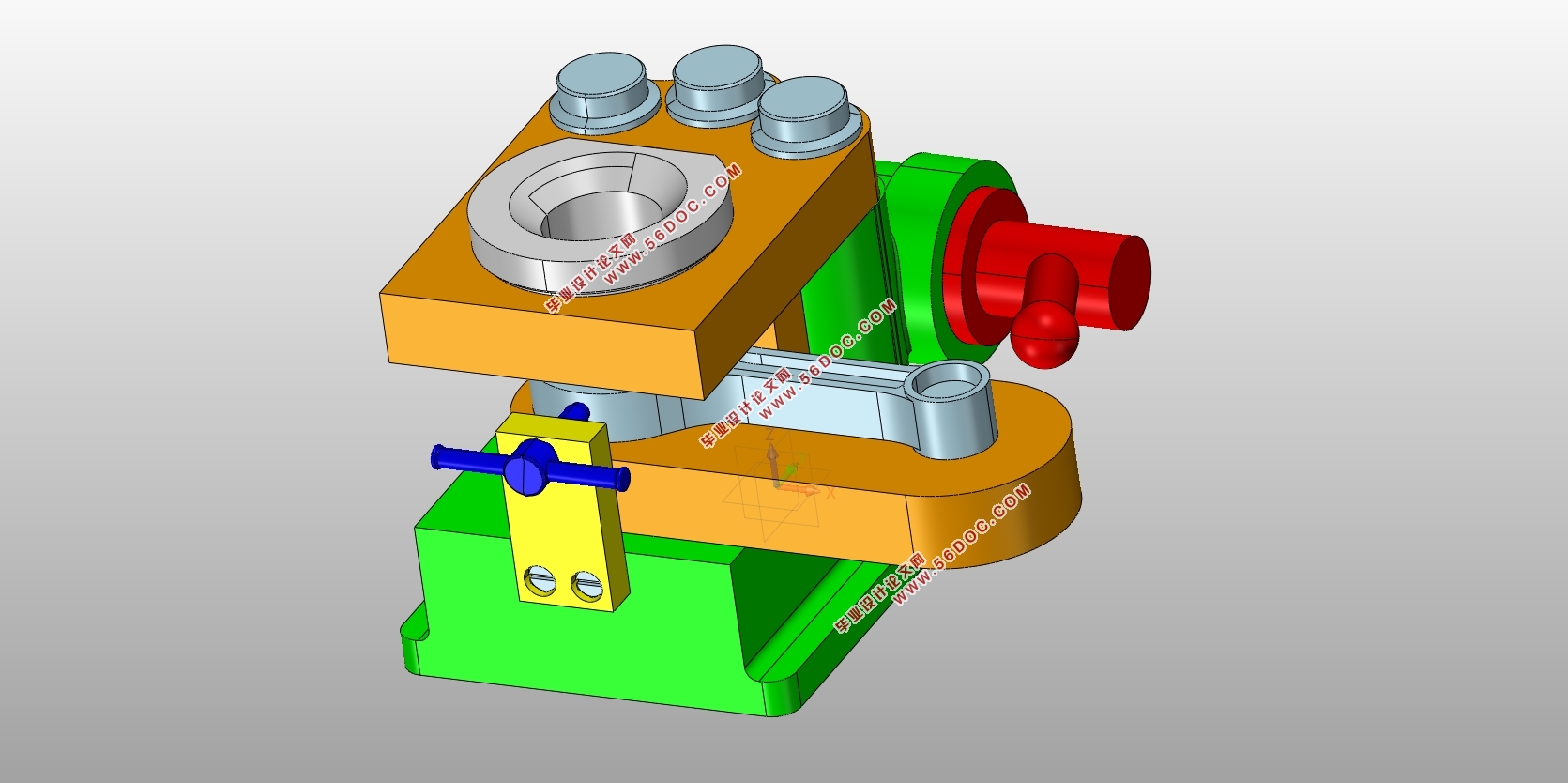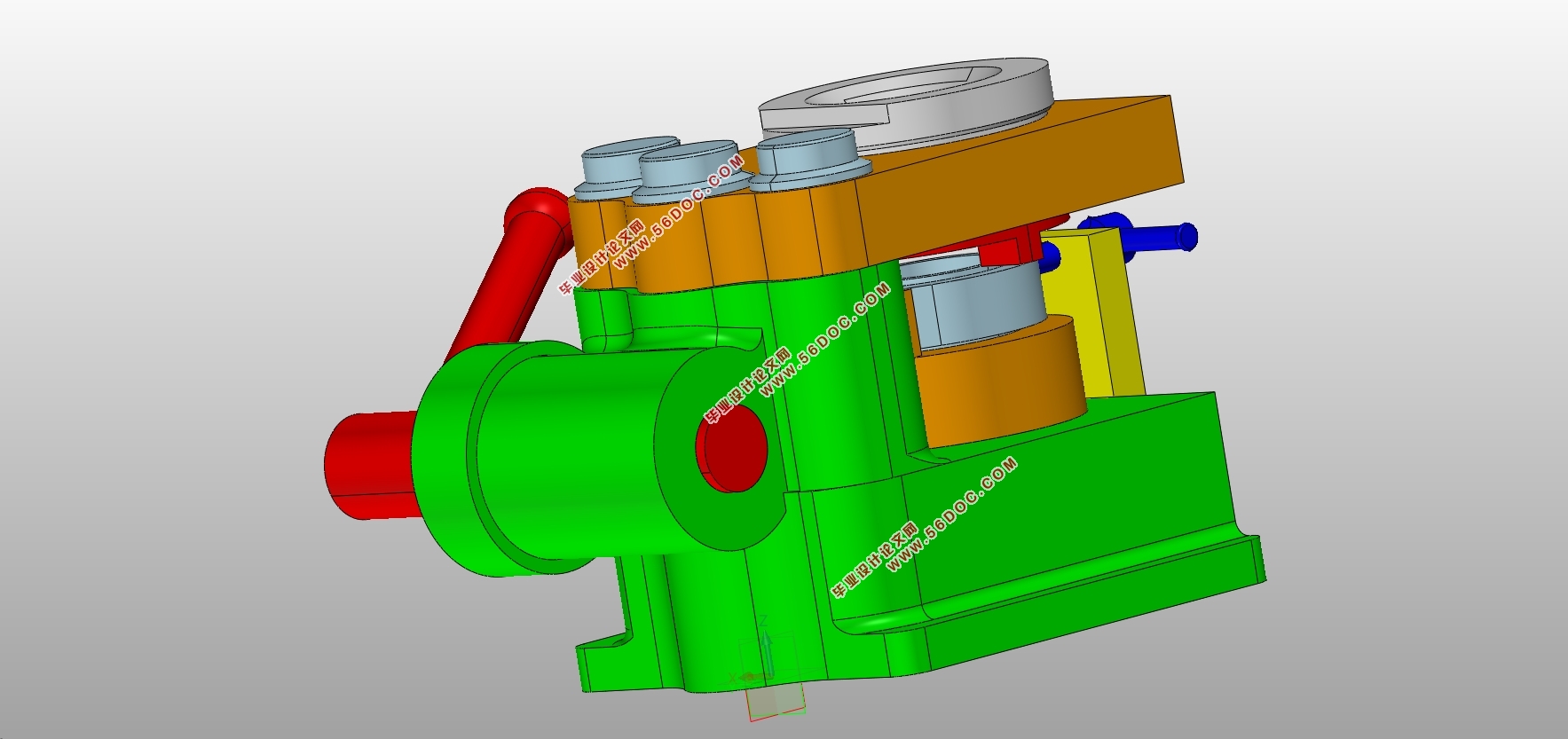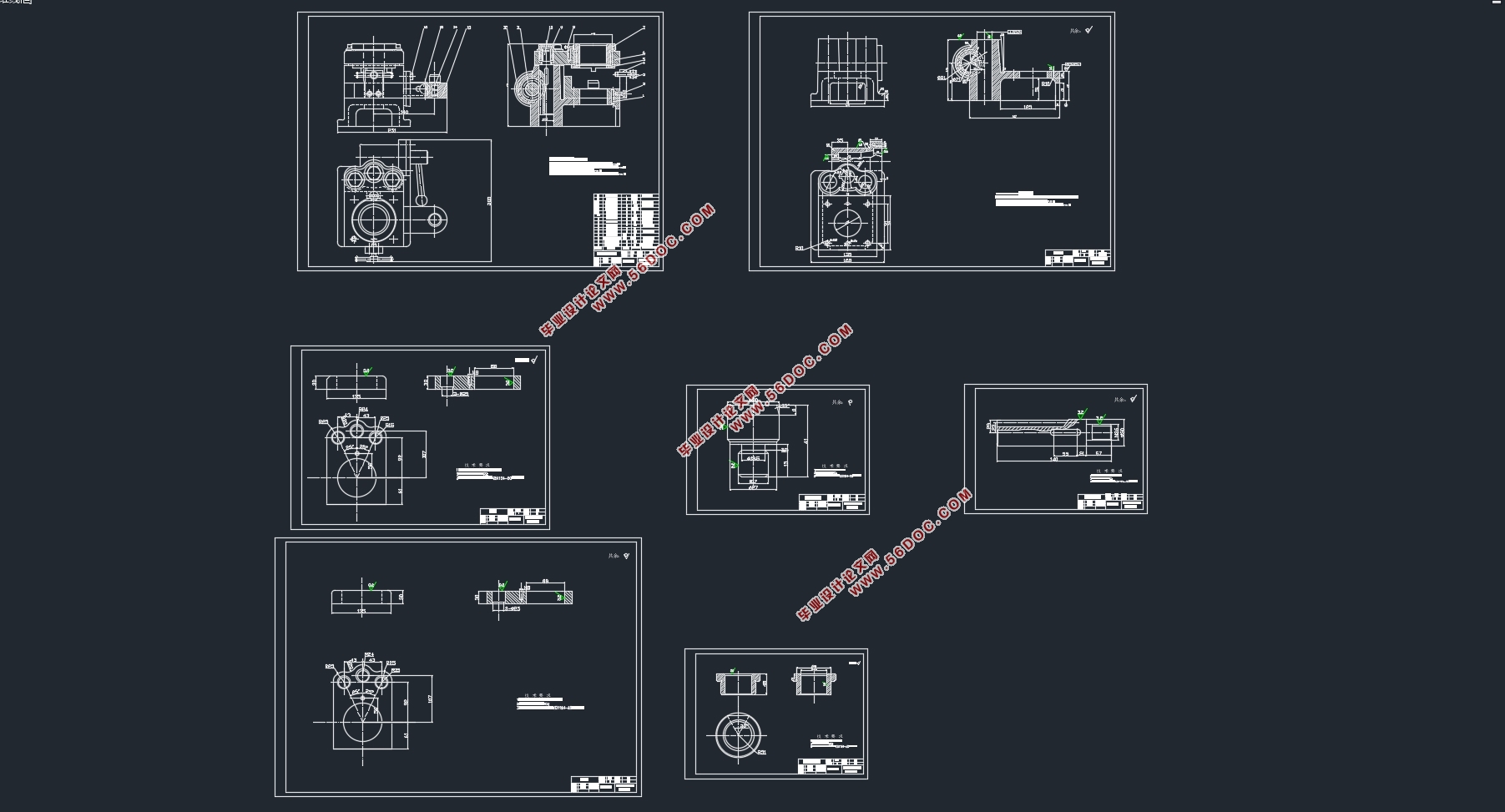发动机连杆加工工艺与夹具设计(含CAD零件图装配图,PROE三维图)(开题报告,论文说明书17000字,CAD图7张,PROE三维图,工艺卡片)
摘 要
连杆是发动机中传递动力的重要零件,它把活塞的直线运动转变为曲轴的旋转运动,并将作用在活塞上的力传给曲轴以输出功率。连杆在工作过程中要承受装配载荷(和交变工作载荷的作用,工作条件比较苛刻。为此,现代汽车发动机和其零部件设计开发都要采用先进设计方法及技术。
本文以6170柴油机为例设计连杆。由于柴油机压缩比较高,对连杆的强度要求也会高。面临着连杆刚性比较差容易产生变形这个现实问题,然而连杆的尺寸精度、形状精度和位置精度的要求又都很高,因此在工艺过程的安排中,就应该对主要表面的粗精加工工序进行分类,来逐渐减少加工余量、切削力和内应力的作用,并对加工后产生的变形进行修正,最终达到零件的技术要求。为了满足连杆的加工要求,对连杆扩大头夹具进行设计,然后进行三维建模,最后对夹具中的关键零件进行有限元分析。
本文对连杆的加工工艺进行了分析,制作了工艺卡片。并设计了扩连杆大头夹具,该夹具结构简单,大量采用通用零件,价格低廉。并且对该夹具进行受力分析,满足连杆加工。
关键词:连杆 加工工艺 夹具设计
Abstract
Connecting rod is an important part of the engine power transmission, which changes the linear motion of the piston to the rotational motion of the crankshaft, and the force acting on the piston is transmitted to the crankshaft to output power. Connecting rod in the working process to bear assembly load (including profit and pretightening force bearing over) and alternating load (including gas explosion pressure and inertia force, working conditions are relatively harsh. To this end, the modern automobile engine and its components design and development should be used in modern design methods and technology.
This paper takes the 6170 diesel engine as an example to design the connecting rod. As the compression of the diesel engine is relatively high, the strength of the connecting rod is also high. Facing the rigid link is easy to deform, which is the real problem, however the connecting rod size accuracy and shape accuracy and position accuracy requirements are high, so in the arrangement of the process, you should on the major surface coarse and fine machining process are classified to gradually reduce the machining allowance, cutting force and internal force, and the processing of deformation correction, eventually reach parts of the technical requirements. In order to meet the processing requirements of the connecting rod, the connecting rod is designed, and then the three-dimensional modeling is carried out. Finally, the key parts of the fixture are analyzed by finite element method.
In this paper, the processing technology of connecting rod is analyzed, and the process card is made. The expansion connecting rod big end clamp is designed, which is simple in structure, and is widely used in common parts, and the price is low. And carries on the stress analysis to this jig, satisfies the connecting rod processing.
Key words: connecting rod; processing technology; fixture design;
主要研究内容
本文针对连杆的加工要求,对连杆进击加工工艺分析。重点研究了连杆夹具的设计,对夹具进行受力分析和定位误差分析,并且对关键零件进行有限元分析,从而满足对零件正确加工的需求。夹具设计是组合机床设计中的主要部分,夹具设计的合理与否,直接影响到被加工零件的精度参数。在设计中,设计的主要思路是用于工件以加工端面为定位基准,夹具体的凸台和大端面孔为定位面,工件以气动夹紧,这样设计主要是为了解决了手动夹紧是夹紧力不一致、误差大、精度低、工人劳动强度大等缺点:气动夹紧采用空气作为动力源,资源丰富并且干净、清洁,对周围环境没有污染:不足是噪音比较大。





目 录
摘 要 I
ABSTRACT II
第1章 绪论 1
1.1研究目的与意义 1
1.2国内研究现状 1
1.3柴油机连杆及夹具概述 4
1.4主要研究内容 4
1.5本章小结 4
第2章 柴油机连杆的加工工艺 5
2.1柴油机连杆的用途及其特点 5
2.2发动机连杆的主要技术要求 6
2.2.1 大、小头孔中心距 6
2.2.2 大、小头孔的尺寸精度、形状精度 6
2.2.3 有关结合面的技术要求 6
2.3连杆的材料及毛坯制造 6
2.4连杆的加工工艺过程 7
2.5连杆加工工艺过程分析 8
2.5.1加工原则 9
2.5.2定位基准的选择 9
2.5.3 加工阶段的划分和加工顺序的安排 10
2.5.4 确定合理的加紧方案 10
2.5.5 主要表面的加工方法 11
2.5.6连杆的工艺特点 11
2.5.7 夹具的使用 11
2.6 本章小结 17
第3章 柴油机连杆的加工计算 13
3.1切削用量的选择原则 13
3.1.1粗加工时切削用量的选择原则 13
3.1.2精加工时切削用量的选择原则 13
3.2确定各工序的加工余量、计算工序尺寸及公差 13
3.2.1确定加工余量 14
3.2.2 确定工序尺寸及其公差 14
3.3 工时定额的计算 15
3.4 本章小结 15
第4章 夹具的设计 33
4.1确定定位方案 33
4.2工件的加紧 33
4.2.1夹紧基本原理理论 33
4.2.2 夹紧座 34
4.2.3 夹紧压板 34
4.2.4 夹紧螺钉 35
4.3 夹具受力分析 35
4.3.1 夹具受力方向 35
4.3.2 夹具受力的作用点 35
4.3.3 夹具受力的计算 36
4.3.4 夹具精度计算与分析 36
4.4夹具结构分析与设计 37
4.4.1 夹具的夹紧装置和定位装置 37
4.4.2 夹具的导向 38
4.4.3 钻孔与工件之间的切屑间隙 39
4.4.5定位误差的分析 39
4.5确定夹具体结构 40
4.6 三维装配图PROE建模 41
4.7 齿条的有限元分析 50
4.8 本章小结 51
第5章 总结与展望 45
5.1全文总结 45
5.2工作展望 46
参考文献 47
致 谢 49
|











